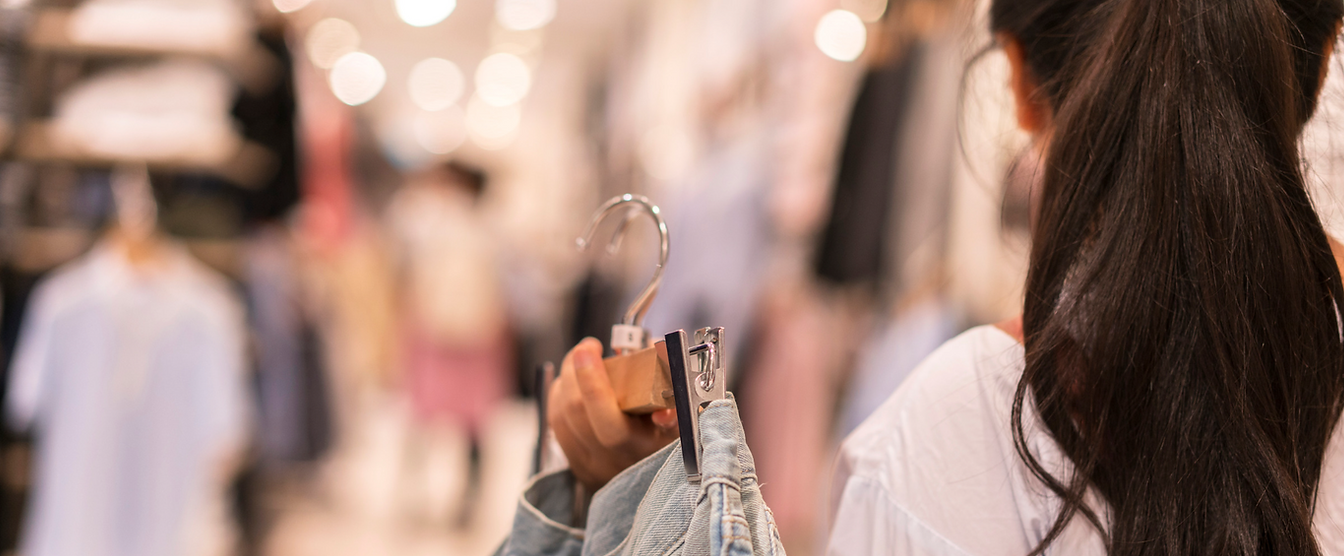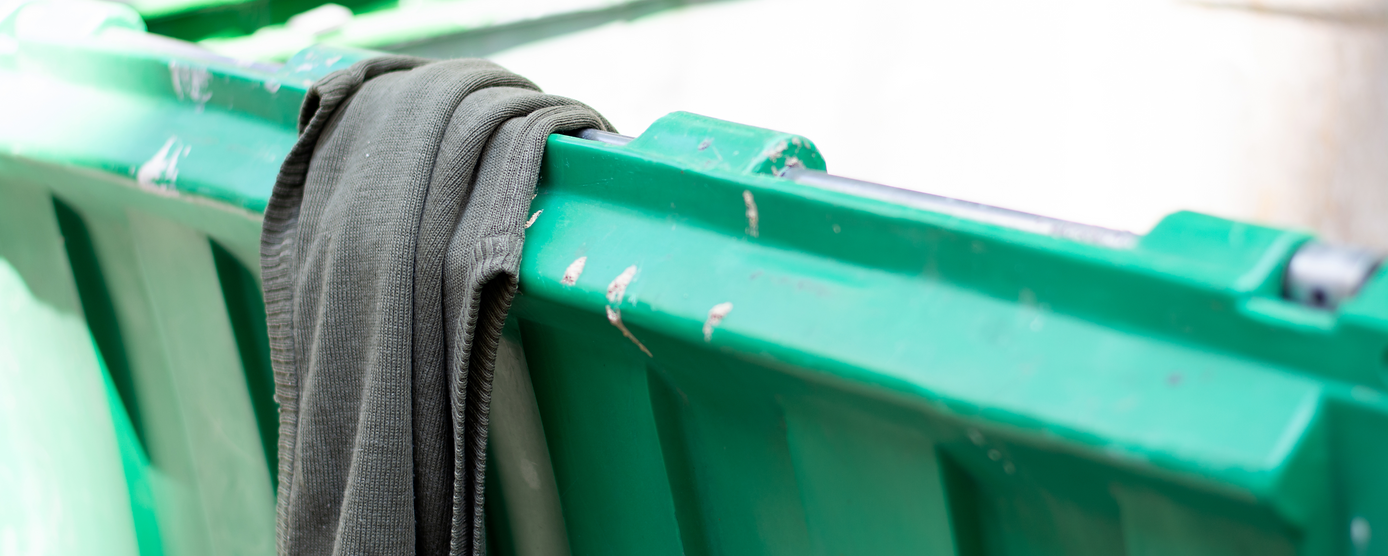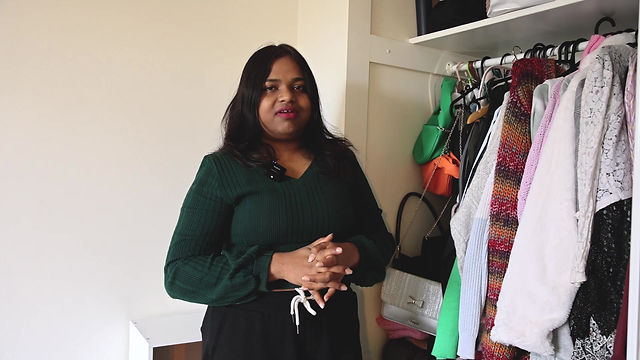

INTRODUCTION
When everything moves fast and changes quickly as it does nowadays, finding for yourself a hobby or piece of joy to stay happy and healthy is an important, especially after prolonged COVID-19 isolation and social distancing.
For many of us, shopping is our favourite pastime. However, it has been considered adversely impactful to your future and our environment adversely.
What will you do in this situation? Will you find an alternative or stay with the things that bring you joy?
No one can answer these questions, only you can.

Chapter 1:
SHOPPING BRINGS ME HAPPINESS
“Shopping can cheer me up!”
Like thousands of people out there, Pooja - a technology recruiter - finds happiness and relaxation at shopping malls. Her favourite weekend activities are going to the stores, trying new arrivals and seeing herself in beautiful dresses.
With the desire to be special and different in each show-up, Pooja always tries to avoid repeating clothes. She becomes a shopaholic who never feels like having enough clothes to wear. The more items she buys, the happier she gets.
In fact, Pooja’s feelings can be explained through the psychological connection between human emotions and purchasing decisions. Financial psychologist Dr. Tracy Thomas points out that emotional shopping can lift our mood and positively affect our state of mind.
Moreover, this activity can also reduce residual sadness through the process of restoring personal control over one’s environment, according to research on the benefits of retail therapy published in the Journal of Consumer Psychology (2013).
Those benefits, hence, are the reasons for the common use of retail therapy nowadays. The researchers Atalay and Meloy considered this psychological treatment as a way to repair bad moods and overcome anxiety, which leads to a healthy mind.
“Each outfit can tell a story of my life.”
Not only revealing her personality, but each fashion item also reminds her about a particular milestone or a precious moment Pooja has had in life. She has a whole story behind each piece of clothing in the closet.
Recently, Pooja chose a tangerine coloured dress to celebrate her graduation. This dress was specially made only for her special day. It made that day unforgettable because she was unique among hundreds of people participating in the ceremony.


“Those items make me feel like I belong to a community.”
Jay considers himself a shopaholic like Pooja, Jay. He is a hotel management student who goes shopping frequently. “Once or twice a week,” he said. “I can even spend a whole day at a mall, browsing the stores and bringing home whatever fits with my style and my feelings at that moment.” For Jay, clothes and shoes are the most precious collection, which he will keep in his house for years and years, whether he needs them or not.
Beyond showing his style, a fashion item can be a way to join a community for Jay. A few years ago, he started collecting Off-White shoes made by his favourite designer, Virgil Abloh. Owning a couple of shoes from Off-White, for Jay, is a sign of an Abloh fan who loves high-end streetwear items and admires Abloh’s creativity in fashion.

Based on Maslow’s Hierarchy of Needs, shopping not only satisfies Jay’s basic needs (Physiological) but also fulfils his belonging needs and ego-driven needs (Esteem). Those help him find his position and make him believe in his value in a particular community, which then leads to self-confidence and psychological well-being.

Maslow's hierarchy of needs
“Fashion is my investment.”
Buying and collecting shoes is also how Jay invests his money. He buys shoes upon their first release, uses them sometimes, keeps until their value increases, and then sells them to earn money. This is a common trend among shoe lovers.

Jay's investment in his shoes collection
The purchase of self-treats leads to psychological well-being. But is it harmful to your future and our environment?

TEXTILE WASTE MOUNTAINS START FROM YOUR CLOSET
Chapter 2:
When I asked Pooja and Jay about their thoughts before purchasing fashion items, both said their initial idea was “It fits me perfectly” and “I have to own it now.” None of them had a second thought about whether they actually needed it or not. That is why some items are still untagged in Jay’s closet, and Pooja needs to contain her clothes in the luggage inside a big wardrobe in her room.

What happened to your used clothes?
POOJA
Same as Pooja or Jay, 60% of Australian consumers prefer to focus on their current needs, rather than considering future demands and thinking about the impacts of their purchasing decisions, according to the Australian Ethical Consumer Report.
Even though they unintentionally harm the environment, the overconsumption behaviour of shopaholics has contributed to the worsening of textile waste in Australia.
OVERCONSUMPTION
Overconsumption in fashion is defined as the creation of fashion waste through the excessive purchasing of products.

Australian consumer archetypes - By Australian Ethical Consumer Report

Australian textile waste issue
Margaret Paul reported that the situation is worse than ever when landfills in Melbourne’s southeast are running out of space within two to three years. And by 2025, our country will have reached landfill space capacity, RMIT forecasted.

What is the environmental cost of our wardrobes?
According to the European Parliament (2021), apparel and footwear industries were responsible for 8-10% of global carbon emissions, excluding the emissions of delivery processes. At this pace, this figure can surge to over 50% by 2030.
Polyester - a cheap synthetic fossil fuel-based fibre widely used in the textile industry - is an enemy of Mother Earth. Ellen Macarthur Foundation estimated that the 2015 polyester production worldwide emitted over 700 million tonnes of carbon dioxide. This is equivalent to the total amount of greenhouse gas emissions of 180 coal-fired power plants annually.
Moreover, the amount of water the fashion industry uses each year - 93 billion cubic metres - is enough to meet the water demand of 5 million people. In addition, sewage from textile dyeing and finishing made up up to 20% of industrial wastewater pollution.
0.5 million tonnes of microfibers from washing synthetics are released into the ocean every year. This accounts for 35% of primary microplastics released into the environment.
The purchase of self-treats causes environmental pollution.
Will you find an alternative or stay with your shopping hobby?

Chapter 3:
ENVIRONMENTALLY-CONSCIOUS CONSUMERS
What is it?
What is it?
Becoming environmentally conscious is not only being mindful of the impact that your buying decisions have on the environment, but also actively going the extra mile to ensure your impact is minimised.
When choosing sustainable options, you are advocating for ethically made clothes, and discouraging others who ignore or lie about the social and environmental consequences of their actions.
The priority here is “buy less”, following with “buy sustainably.” In other words, it means only buying when needed, and only purchasing environment-friendly products.
As an environmentally-conscious consumer at a very young age, PJ - an animation student - always asks themselves a few questions before buying a piece of clothing.

PJ
What do you think before purchasing a piece of clothing?
Similar to PJ, here are some questions you should ask yourself before buying something to become a consumer with environmental consciousness:
-
Do I have a similar one in my closet?
-
Do I actually need that?
-
Is this piece made from recycled or eco-friendly materials?
-
Does its manufacturing process harm the environment?
-
Is it possible to reuse, recycle or repair?
-
Can I find something similar in op-shops?
-
Are there eco-friendly alternatives?
In the 2022 Ethical Fashion Report, Baptist World Aid Australia assessed 581 brands across 120 fashion companies and ranked the Top 10 Australian ethical brands, based on scrutinising the origins of raw materials and sustainable fibres used, as well as the human right aspects of the production process.

Health benefits
In comparison to retail therapy, buying with environmental consciousness also brings us happiness and a stress-free life, but in a completely different way.
Minimising negative impacts on nature gives us a sense of living responsibly with the planet and future generations. With this attitude in mind, we can understand our value to society, thereby leading to increased self-esteem and confidence in each individual.
Moreover, this kind of consumption behaviour plays a crucial role in reducing environmental agents and creating a greener and cleaner environment for living. It is proven to lower our risks of developing Neurotic or Stress-Related Disorders, the Australia and New Zealand Mental Health Association reported.
Sustainable fashion

To learn more about sustainable fashion:
Author

Linh Le
I am a Vietnamese girl craving to tell inspiring human stories through visuals and digital tools.
Two years ago, my passion for sustainability and climate change started. Until now, I am constantly learning and educating myself about these topics, and find the most compelling way to inspire people to go greener and cleaner for our ONLY EARTH.
Hope you enjoy my piece. Your feedback to improve the article is more than welcome.
And please share if you see it valuable for others.
Thank you!
Clothes shopping: Treat yourself or your future is a long-form journalism produced as part of the Multiplatform Media Production & Practice unit at Swinburne University of Technology under the supervision of Lecturer, Mr Andrew Garton.


